Samsung Galaxy S23 Ultra vs iPhone 14 Pro Max: Which phone wins?
The Galaxy S23 Ultra and iPhone 14 Pro Max battle it out for world's best phone
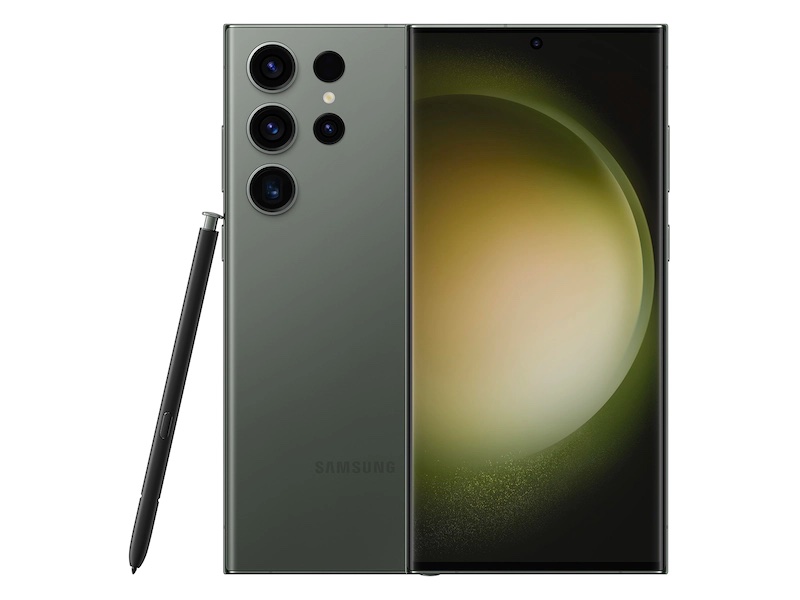
The Samsung Galaxy S23 Ultra stands out with its 200MP camera, which offers amazing detail and the ability to reframe your shots. You also get an improved selfie camera and low-light performance, a fast Snapgragon 8 Gen 2 chip, excellent battery life and a built-in S Pen.
For
- Powerful 200MP camera
- Fast Snapdragon 8 Gen 2 chip
- Awesome display
- Excellent battery life
- Smart One UI 5.1 upgrades
Against
- Curved screen can get in way
- No upgrade in charging speed
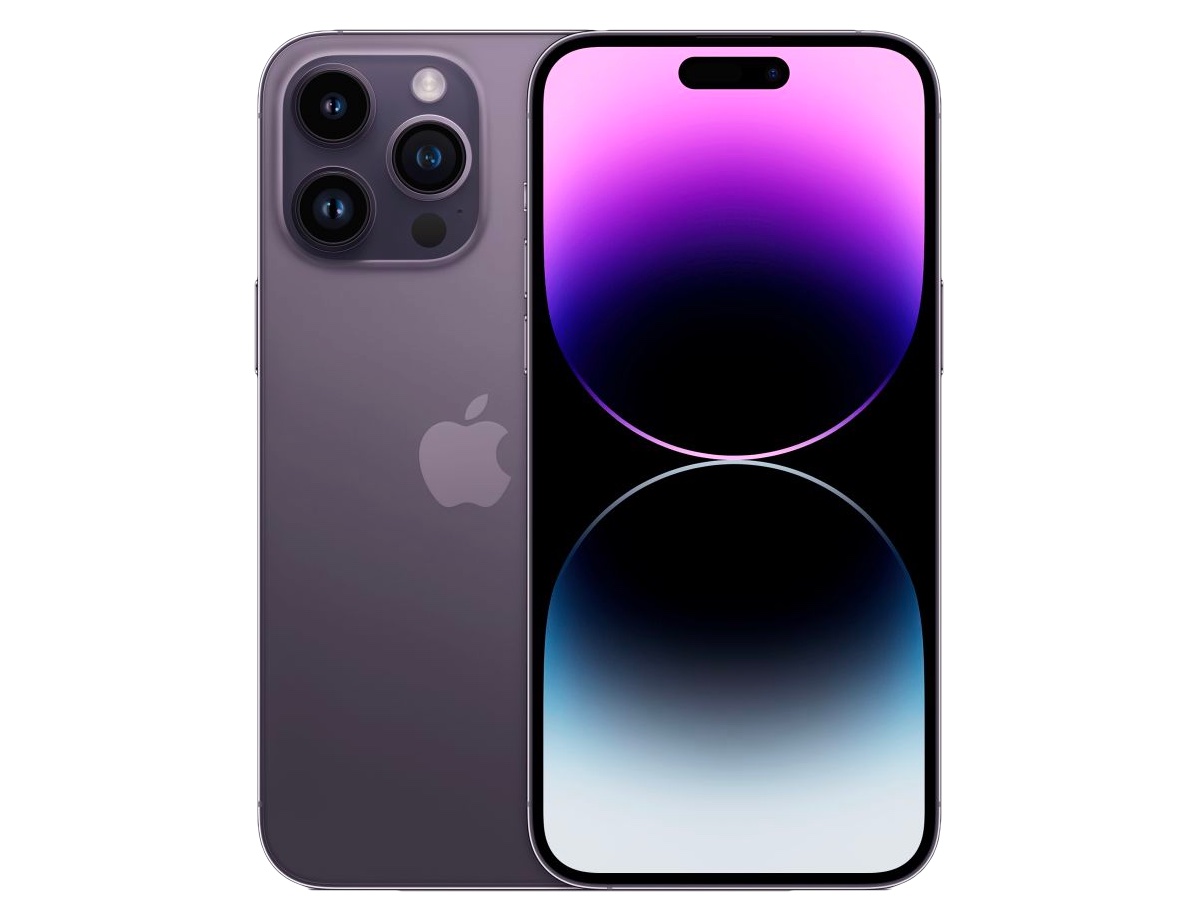
The iPhone 14 Pro Max takes Apple's photography to the next level with a main 48MP camera that can shoot in ProRAW format and an impressive Action mode for video. The A16 Bionic chip is the fastest around, and this flagship offers a new Dynamic Island for alerts and Live activities.
For
- Superb 48MP camera
- Very smart Dynamic Island
- Superb battery life
- Always-on display
- Impressive Action mode video
Against
- Lack of SIM Card slot
- Still just 20W charging
- A bit thicker and heavier
The Samsung Galaxy S23 Ultra vs iPhone 14 Pro Max face-off is here, and it's easily one of the most epic smartphone battles yet.
Apple came first with the iPhone 14 Pro Max, which we rated highly after our testing. The iPhone's new 48MP main camera, Dynamic Island-equipped display and super-powered but efficient A16 Bionic chipset make one of the top phones we've tested.
However, as you'll see in our Galaxy S23 Ultra review, Samsung ups the ante with a whopping 200MP camera, a blazing Snapdragon 8 Gen 2 for Galaxy chip that delivers sizzling graphics performance and much improved battery life.
So which is the best phone for you? Our detailed Samsung Galaxy S23 Ultra vs. iPhone 14 Pro Max comparison will help you decide and crown an overall winner. This contest is as close as it gets.
Galaxy S23 Ultra vs iPhone 14 Pro Max: Price and value
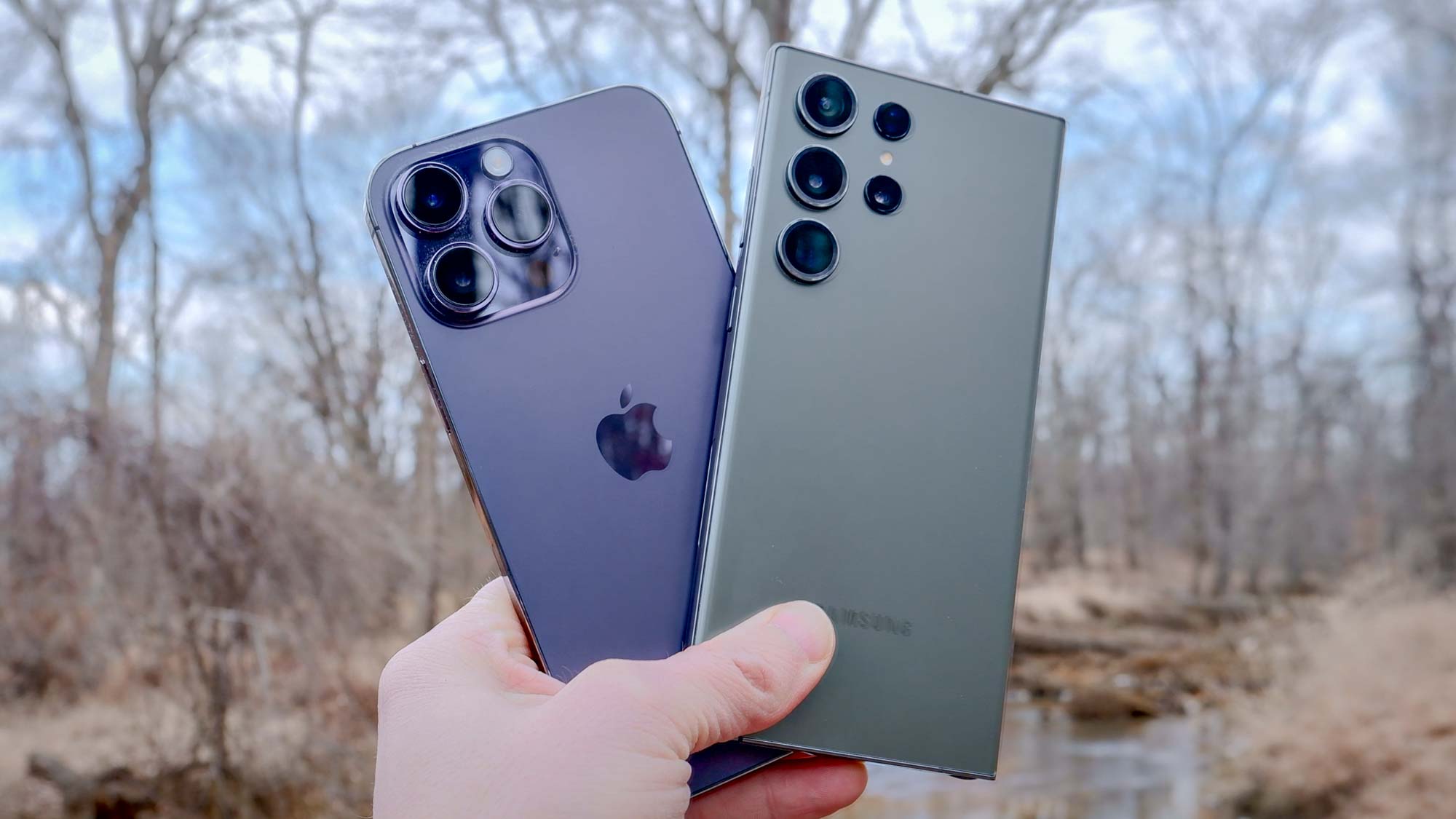
The iPhone 14 Pro Max starts with 128GB of storage. The starting price is $1,099 / £1,199 / AU$1,899. You can upgrade to 256GB for $1,199 (£1,309 / AU$2,099). Going to 512GB costs $1,399 (£1,529 / AU$2,419) and 1TB will run you $1,599 (£1,749/AU$2,769).
The Galaxy S23 Ultra starts at $1,199 / £1,249 / AU$1,949, the same price as the Galaxy S22 Ultra in the U.S. While U.K. customers will pay more for the phone, the good news is that the Galaxy S23 Ultra features 256GB of storage in its base model, double the amount of last year's phone, as well as 8GB of RAM.
Sign up to get the BEST of Tom's Guide direct to your inbox.
Get instant access to breaking news, the hottest reviews, great deals and helpful tips.
Upgrading to 12GB of RAM and 512GB of storage costs $1,379 / £1,399 / AU$2,249, while the 1TB model costs $1,619 / £1,599 / AU$2,649. See the best Galaxy S23 Ultra deals for the latest discounts.
Winner: iPhone 14 Pro Max. The Galaxy S23 Ultra scores points for starting at 256GB but it's good that you can get an iPhone 14 Pro Max for $100 less.
Samsung Galaxy S23 Ultra vs iPhone 14 Pro Max: Specs
| Galaxy S23 Ultra | iPhone 14 Pro Max | |
| Price | $1,199 / £1,249 / AU$1,949 | $1,099 / £1,199 / AU$1,899 |
| Display | 6.8-inch AMOLED (3088 x 1440) | 6.7-inch OLED (2796 x 1290) |
| Refresh rate | 1 - 120Hz adaptive | 1 - 120Hz adaptive |
| Rear cameras | 200MP main (f/1.7), 12MP ultrawide (f/2.2), 10MP 3x telephoto (f/2.4), 10MP 10x telephoto (f/4.9) | 48MP main (f/1.78), 12MP ultrawide (f/2.2), 12MP telephoto (f/2.8) with 3x optical zoom |
| Front camera | 12MP (f/2.2) | 12MP (f/1.9) |
| Chipset | Snapdragon 8 Gen 2 for Galaxy | A16 Bionic |
| RAM | 8GB/12GB | 6GB |
| Storage | 256GB, 512GB, 1TB | 128GB, 256GB, 512GB, 1TB |
| Battery | 5,000 mAh | 4,323 mAh |
| Charging | 45W wired/10W wireless | 25W wired/15W MagSafe |
| Water/dust resistance | IP68 | IP68 |
| Size | 163.4 x 78.1 x 8.9mm (6.4 x 3.0 x 0.35 inches) | 160.7 x 77.6 x 7.85 mm (6.3 x 3.1 x 0.31 inches) |
| Weight | 233g (8.2 ounces) | 240g (8.5 ounces) |
| Colors | Phantom Black, Cotton Flower, Botanic Green and Mystic Lilac | Space Black, Silver, Gold, Deep Purple |
Galaxy S23 Ultra vs iPhone 14 Pro Max: Design
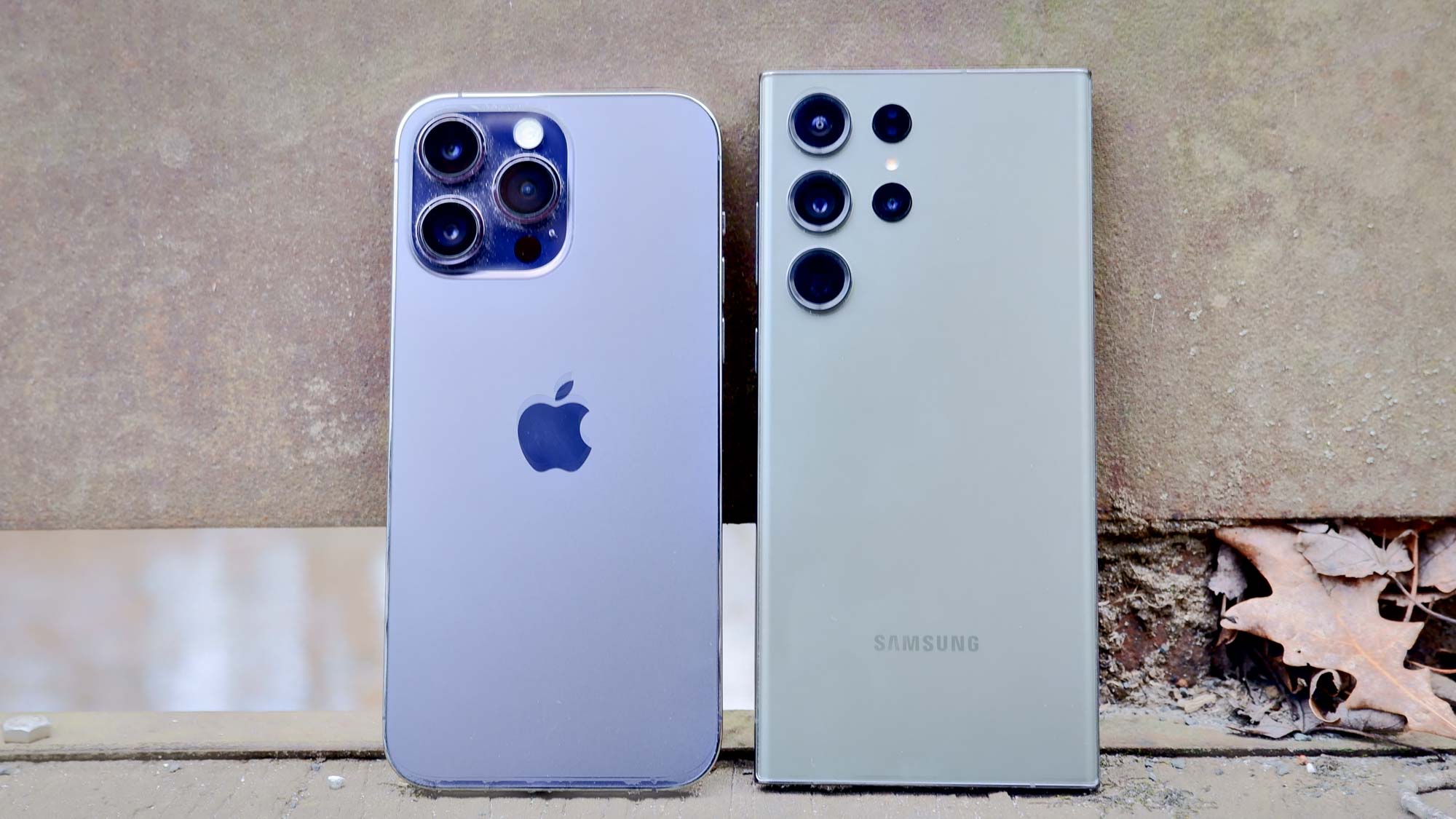
The iPhone 14 Pro Max offers a couple of key design changes compared to the iPhone 13 Pro Max. The camera bump on the back of the iPhone is now a bit larger, and there's also now a new Dynamic Island housing for the front cameras instead of the iPhone's familiar notch.
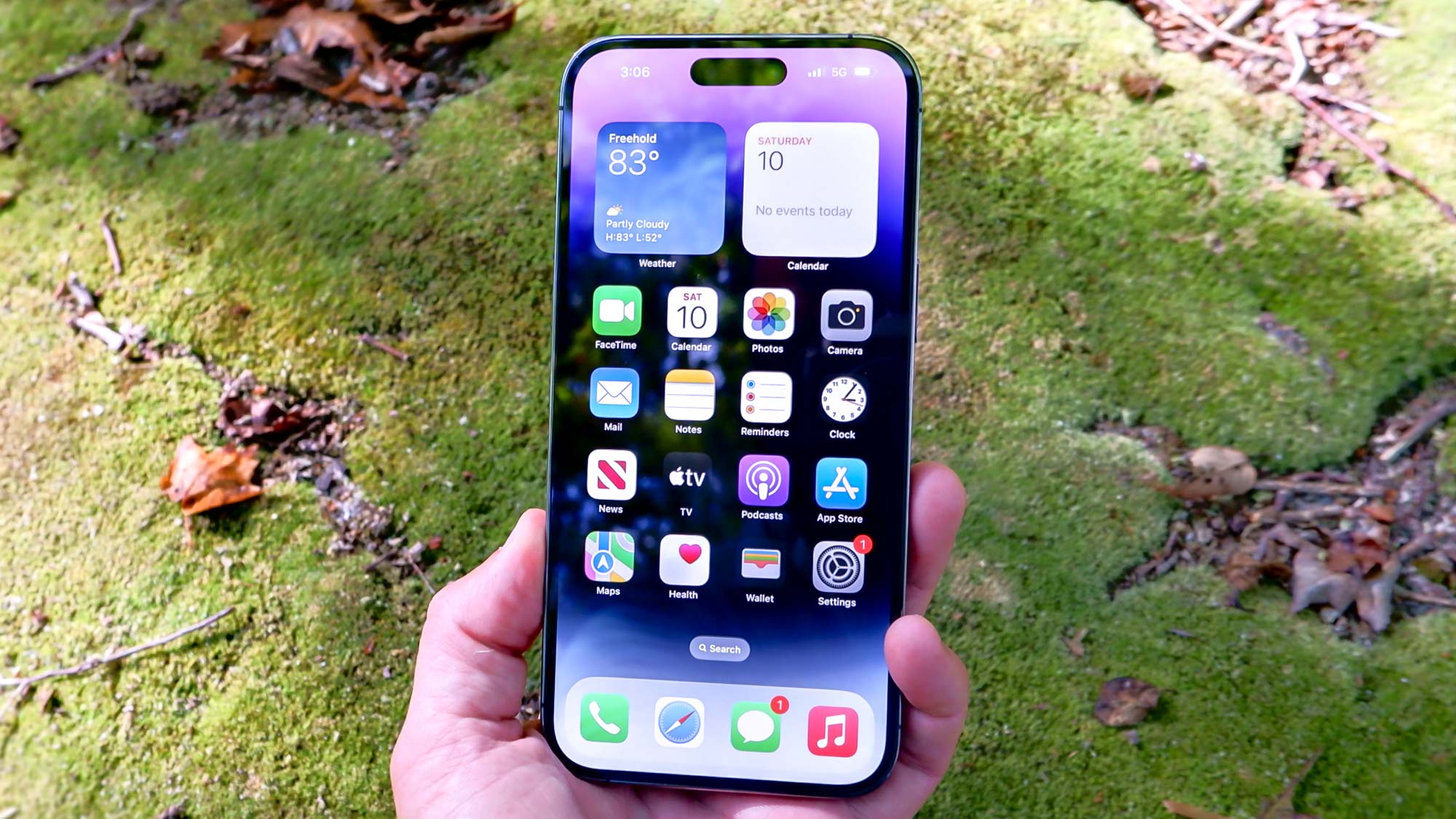
The iPhone 14 Pro Max features squared off sides and a flat display, which we prefer to the curved panel on the Galaxy S23 Ultra. Even though Samsung reduced the curve this time around, that curve still can make it needlessly difficult to press on-screen buttons or interact with the device when there's content on the edges.
The Galaxy S23 Ultra also features larger cameras than last time but its design is largely the same, including an S Pen slot and a SIM card tray. Apple ditched the SIM card for eSIM, which some may find annoying. The S23 Ultra also features a USB-C port, while Apple sticks with its Lightning port.
Both the Galaxy S23 Ultra and iPhone 14 Pro Max claim to be durable, but Samsung says it has the first phone with Gorilla Glass Victus 2, which promises to better protect against scrapes and drops. It proved it too in a recent drop test.
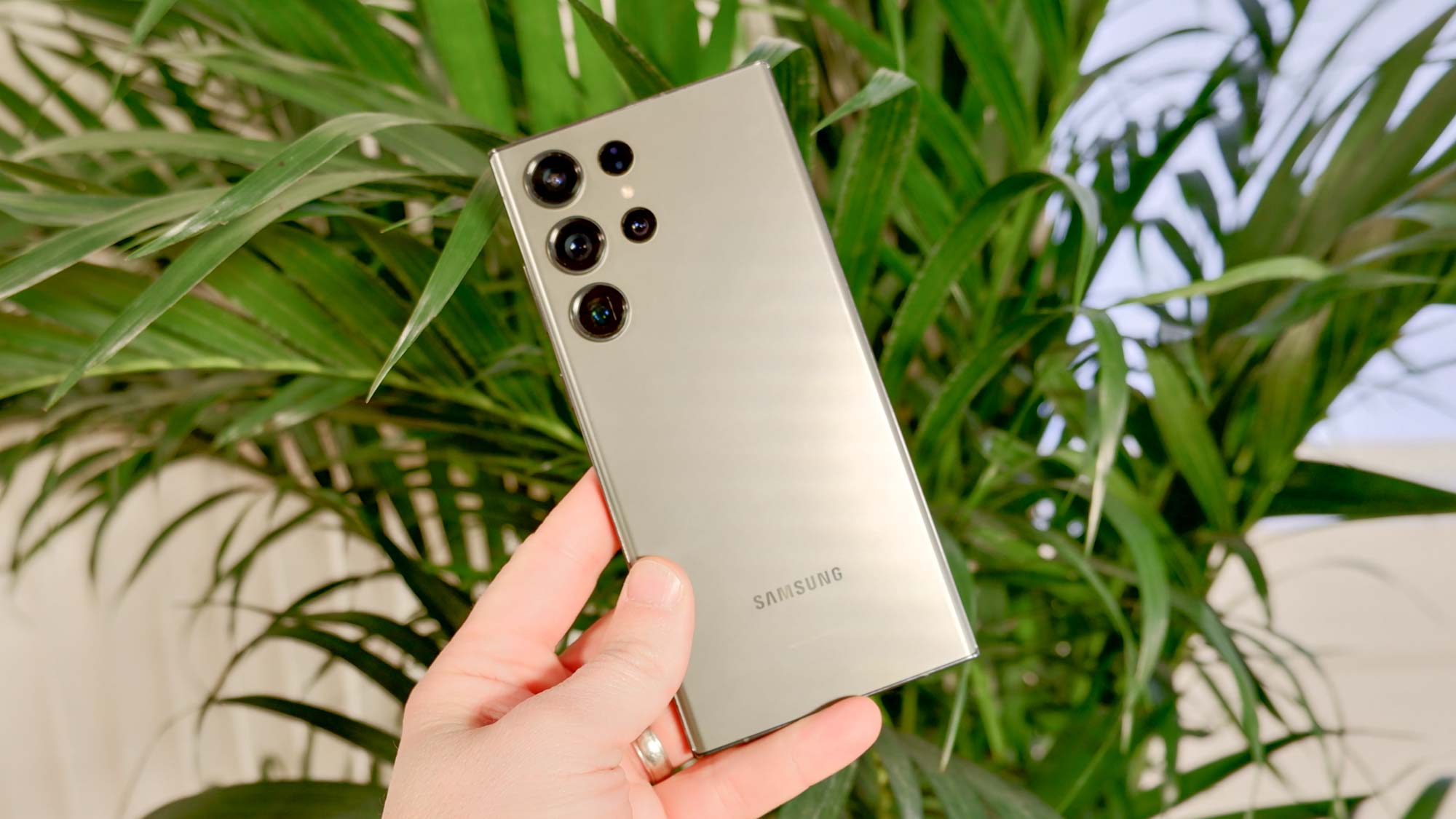
The Galaxy S23 Ultra comes in four colors — Phantom Black, Cream, Green, Lavender — with another four colors available when you order directly from Samsung. You can get the iPhone 14 Pro Max in a refreshed set of colors, consisting of Space Black, Deep Purple, Silver and Gold.
Measuring 6.4 x 3.0 x 0.35 inches and weighing 8.2 ounces, the Galaxy S23 Ultra is narrower and lighter than the iPhone 14 Pro Max (6.3 x 3.1 x 0.31 inches and 8.5 ounces). Samsung's phone is easier to use in one hand as a result.
Winner: Galaxy S23 Ultra. While the iPhone's design looks more elegant, the Galaxy S23 Ultra's taller yet narrower design is friendlier to one-handed use.
Galaxy S23 Ultra vs iPhone 14 Pro Max: Display
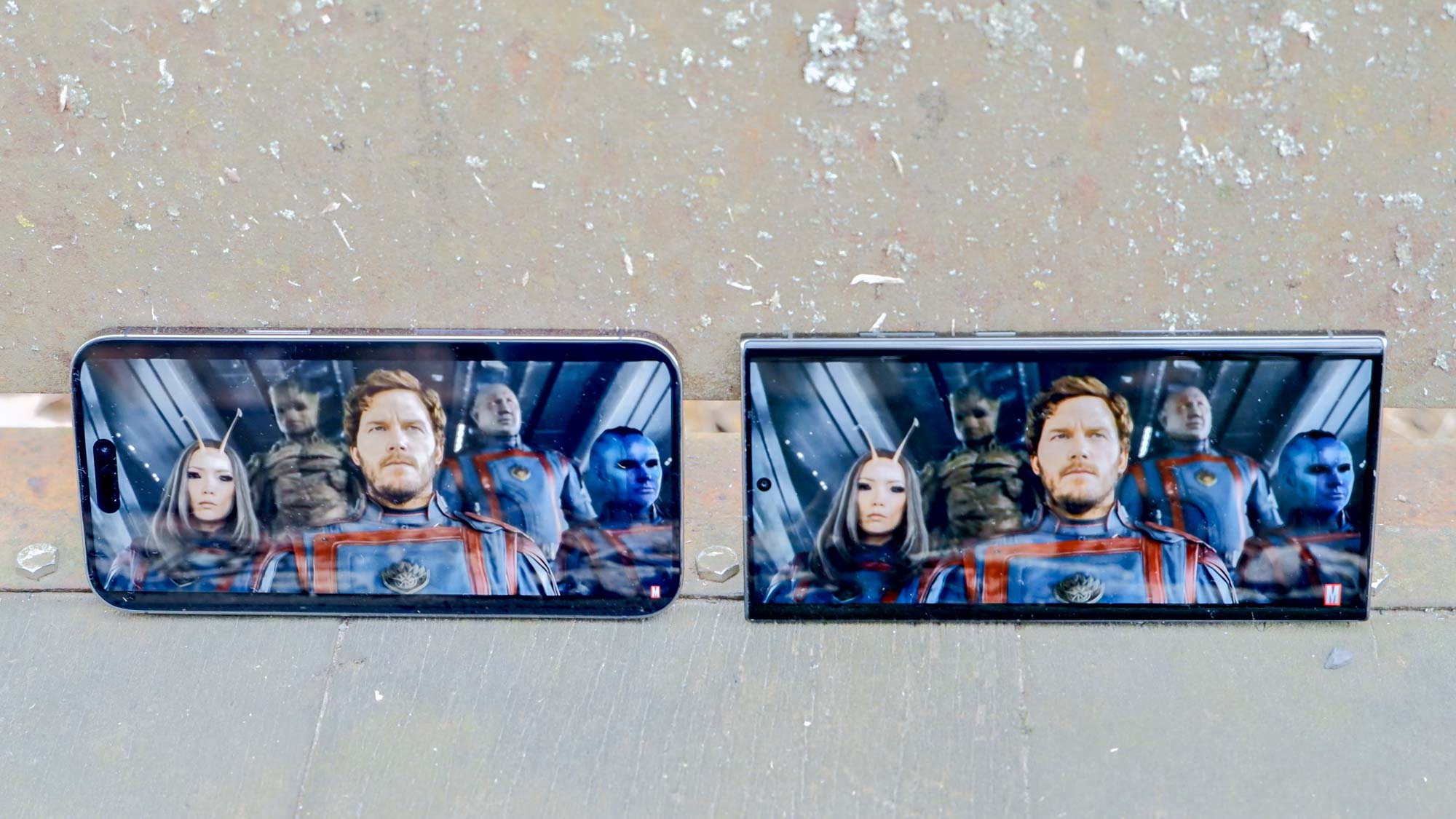
The iPhone 14 Pro Max features a 6.7-inch AMOLED display, with a 120Hz adaptive refresh rate and a Super Retina XDR resolution (between FHD and QHD). It's an impressive display, with high brightness and vivid, accurate colors.
The Pro Max also offers always-on display functionality for looking at the time, notifications and other info at a glance, which Samsung has offered for a while.
| Row 0 - Cell 0 | Galaxy S23 Ulra | iPhone 14 Pro Max |
| HDR brightness (average) | 1225 nits | 1275 nits |
| DCI-P3 color | 112.2% (Natural) / 193% (Vivid) | 83.2% |
| Delta-E (lower is better) | 0.3 (Natural) / 0 (Vivid) | 0.26 |
The Galaxy S23 Ultra packs a slightly larger 6.8-inch panel with an adaptive 120Hz refresh rate and the same QHD resolution as before. Samsung has improved its Eye comfort shield feature, which limits blue light; an enhanced comfort mode adjusts color tones and contrast of the screen for comfier viewing.
In our lab tests, the iPhone 14 Pro Max averaged a slightly higher brightness of 1,275 nits when viewing HDR content, compared to 1,225 nits for the Samsung. But the Galaxy S23 Ultra registered more of the demanding DCI-P3 color gamut.
Another plus for the Samsung is that you can choose between Natural and Vivid mode, depending on how punchy you like your colors. In Natural mode the iPhone offered more accurate hues in our Delta-E test, but the Samsung fared better in vivid mode.
Winner: Galaxy S23 Ultra. Both displays are amazing, but we give a slight edge to the Samsung for giving you slightly more real estate and better color saturation.
Galaxy S23 Ultra vs iPhone 14 Pro Max: Cameras
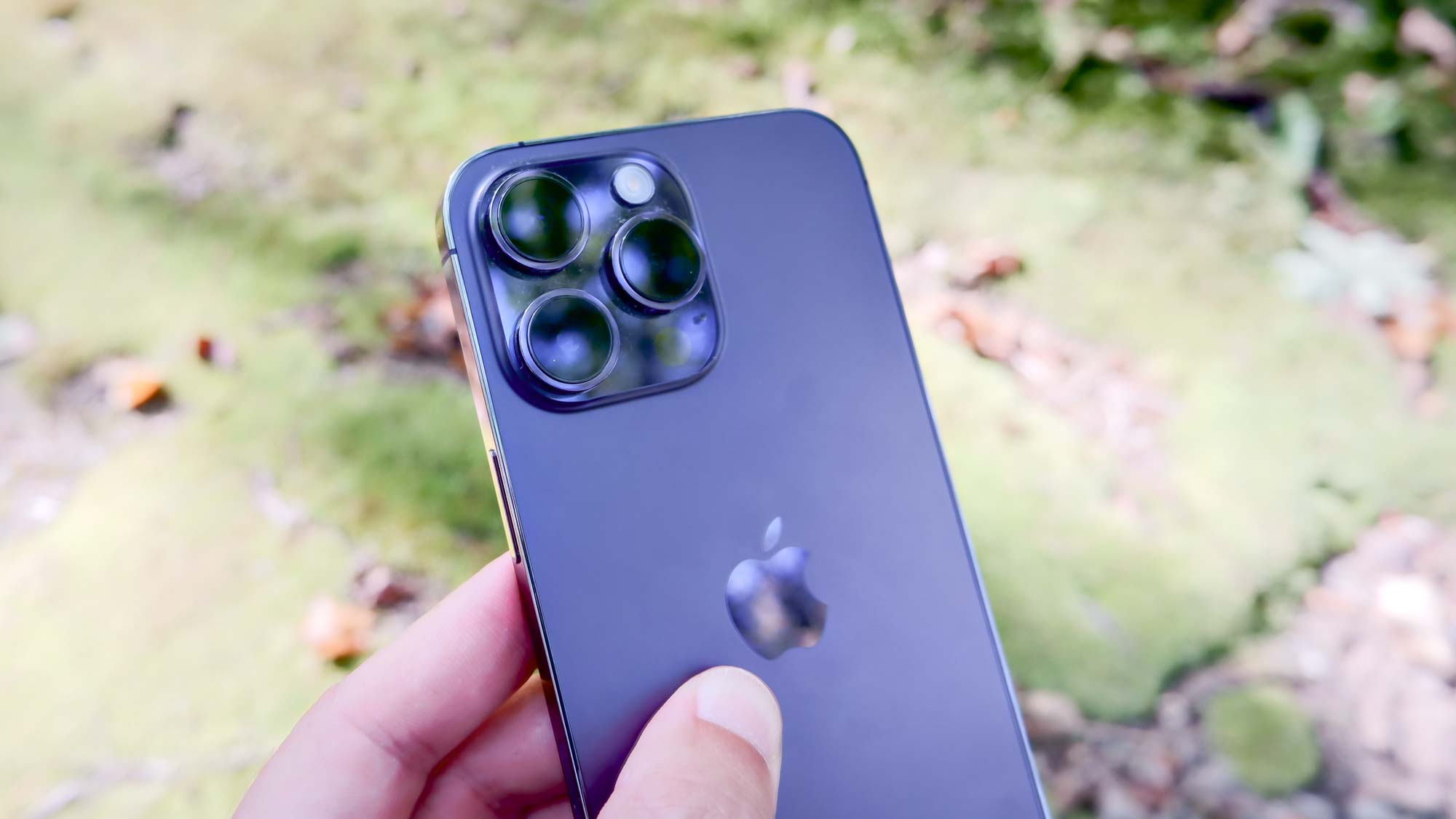
The iPhone 14 Pro Max gets a camera boost in the form of a new 48MP main camera capable of shooting in both 12MP and 48MP RAW formats for more brightness or detail depending on what the user prefers.
The latest iPhone also features the same auto-focusing 12MP selfie camera as the other iPhone 14 models, while its ultrawide sensor is twice as big as before. The 12MP 3x telephoto and depth-sensing LiDAR scanner remain the same.
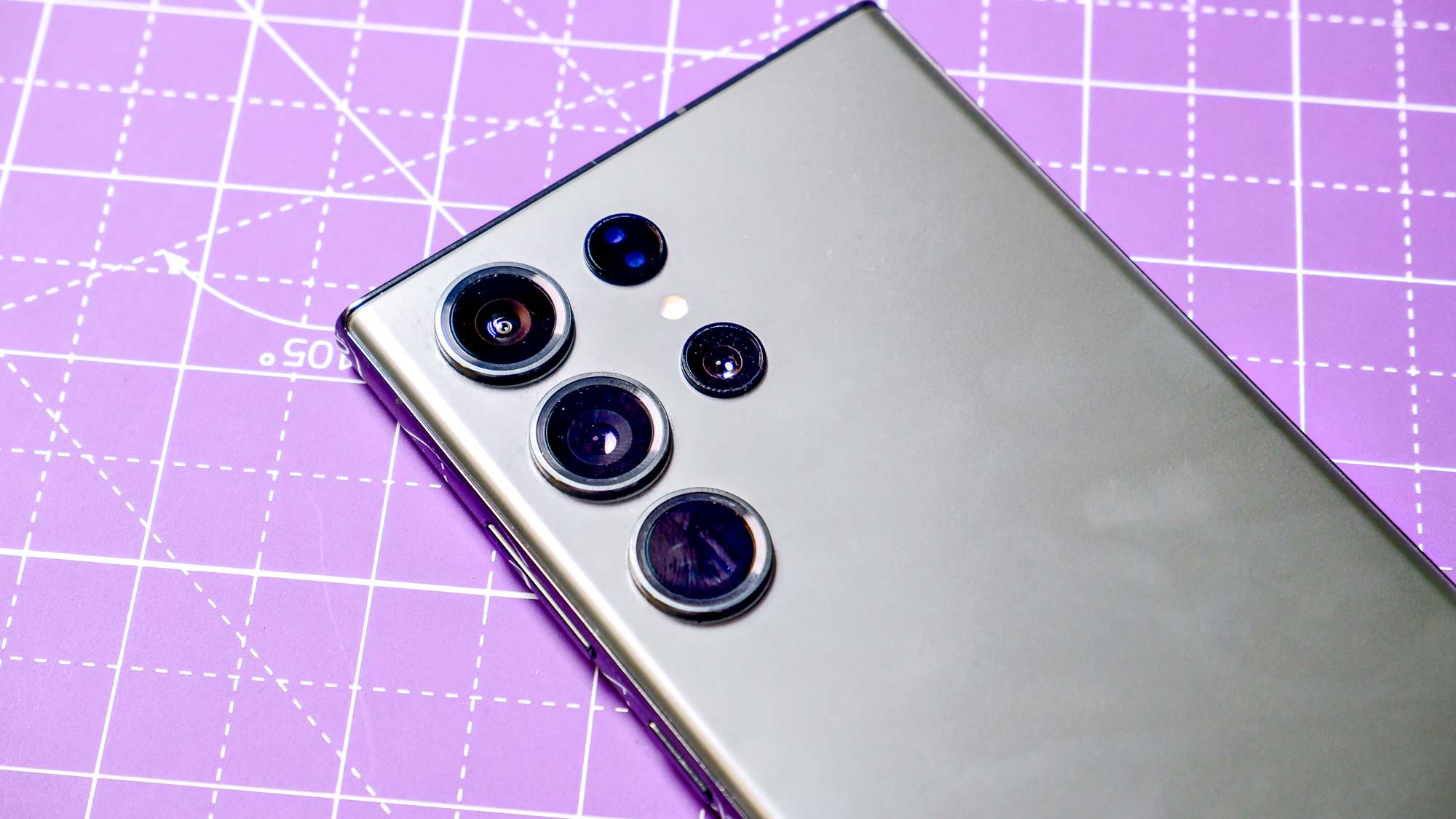
Meanwhile, the Galaxy S23 Ultra boasts a huge 200MP main camera. You're able to combine 16 pixels into one for a 12MP photo when lights are low, but you can also shoot at 50MP resolution or in the full 200MP mode. And you can get some very impressive results if you want to reframe and crop your shots.
The 12MP ultrawide and dual 10MP telephoto lenses remain unchanged from what you got on the Galaxy S22 Ultra, but it's important to note that the Galaxy's 3x and 10x telephoto zoom lenses beat the 3x optical zoom on the iPhone. And the S23 Ultra goes up to 100x space zoom, compared to just 15x on the iPhone 14 Pro Max.
Up front, the Galaxy S23 Ultra trades in its predecessor's 40MP front shooter for a 12MP selfie cam. There's a faster autofocus here, and Samsung has also improved night photo and video capture features, so it's actually an upgrade.
In this portrait comparison, the Galaxy S23 Ultra delivers crisp detail in my blue jacket and hair. The bokeh effect is a bit too extreme, though. By comparison, the iPhone 14 Pro's selfie is good but looks to warm.
In this shot of the Bryant Park fountain, I prefer the brighter image from the Galaxy S23 Ultra, which does a better job of exposing the underside of the fountain. The iPhone 14 Pro Max delivers better detail in the brick building but I'd rather share the Galaxy pic.
Here's a case where the S23 Ultra's saturated colors don't quite work. In this close-up of an M&M cookie, Samsung's photo looks unrealistic. The colors are more true-to-life in the iPhone 14 Pro Max shot, especially the cookie and icing. However, you can turn off Scene optimizer on the S23 Ultra for more natural looking results.
In this photo of a fish market at night, the iPhone 14 Pro Max's image is brighter overall, from the walkway and parking lot to the car to the right. However, the S23 Ultra's image does a better job with the neon sign, as it's closer to red than orange.
I'll give the nod to the Galaxy S23 Ultra here in this photo of a fireplace because the wood and flames pop more, especially if you look at the flames in the glass door. The iPhone's shot falls a bit flat.
In this ultra-wide photo, the Galaxy S23 Ultra wins at first glance because of the more vibrant colors in the gtass and sky, but the iPhone's shot delivers more gradation in the clouds and more detailed ripples in the water.
Turning to some fruit, I think the Galaxy S23 Ultra's shot is too bright here, especially in the apples, though the pears in the background look a bit better. The iPhone 14 Pro Max has a more even exposure overall.
Both photos of a colorful bouquet of flowers here look inviting, but upon closer inspection I like how the S23 Ultra pulls out more detail in the petals on the left hand side, and the center of the sunflower is a bit brighter.
In this selfie I give the edge to the iPhone because the S23 Ultra underexposes the shot a bit and my face gets a little lost. You can also see more detail in my shirt and jacket in the iPhone 14 Pro Max shot.
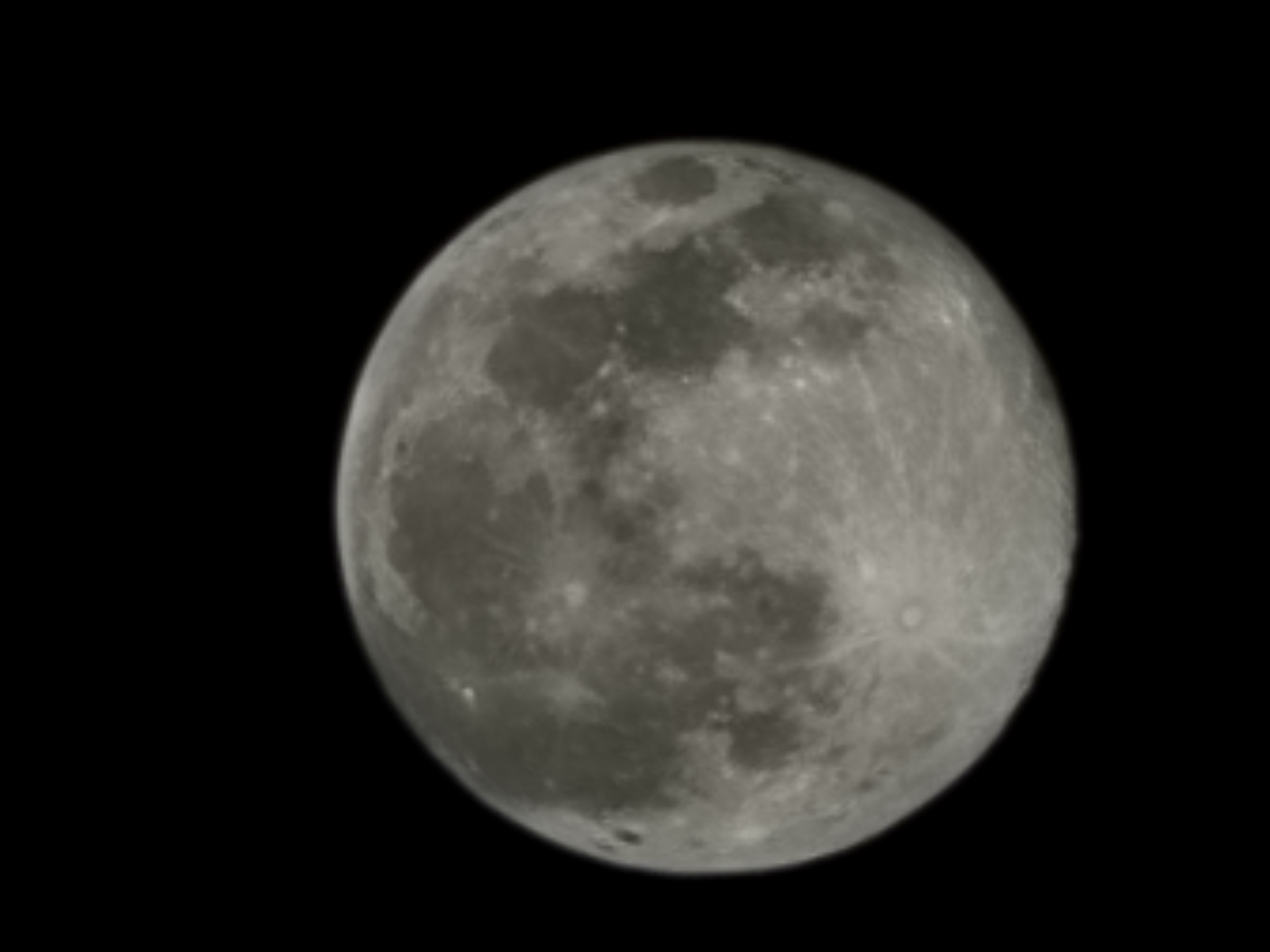
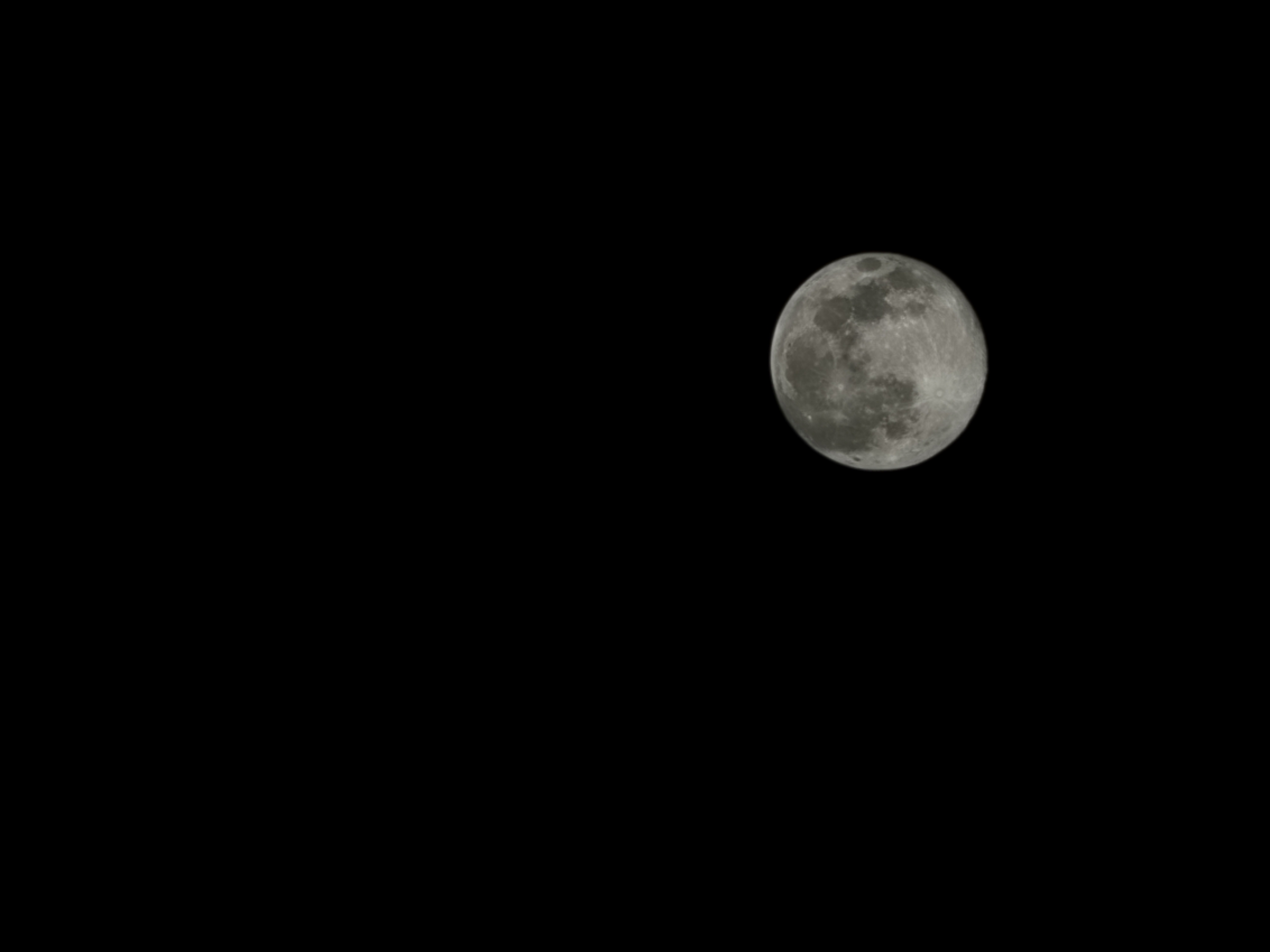


And here's something the iPhone 14 Pro Max can't do at all. The 100x zoom let me take this pretty amazing photo of the moon (albeit one heavily altered by AI), while the iPhone couldn't even get me close. The 30x zoom shot is pretty great, too. The Pro Max can do only 15x.
Winner: Galaxy S23 Ultra. A Galaxy S23 Ultra vs. iPhone 14 Pro Max photo face-off is as close as can be, but in the end, Samsung's superior zoom and the flexibility of its 200MP sensor carry the day.
Galaxy S23 Ultra vs iPhone 14 Pro Max: Video
The Galaxy S23 Ultra offers improved video stabilization in video, and video recording now goes up to 8K at 30 fps (up from 24 fps) with a wider angle for recording (from 57 to 80 degrees).
The iPhone 14 Pro Max maxes out at 4K video at up to 60 fps, although most people don't own an 8K TV or display. So how about quality?
I started with a test running up a small incline at a park trail. The iPhone 14 Pro Max wins this contest hands-down. Not only is its footage smoother, the blue in the sky is more pronounced and it does a better job handling the sun.
I'd say the S23 Ultra is second best here with fairly smooth video, but it's a bit washed out.
I also recored a couple of videos at the Bryant Park skating rink. I actually prefer the Samsung's video in this case, as the footage looks a bit brighter and more colorful.
And with the 10x optical zoom feature on the S23 Ultra (something the iPhone lacks), I could get closer to the skater without losing detail. The zoom mic also kicked in as I got closer to the outdoor music speakers.
Winner: Draw. The iPhone wins on action mode video, but the video quality from the Galaxy S23 Ultra is quite impressive.
Galaxy S23 Ultra vs iPhone 14 Pro Max: Performance
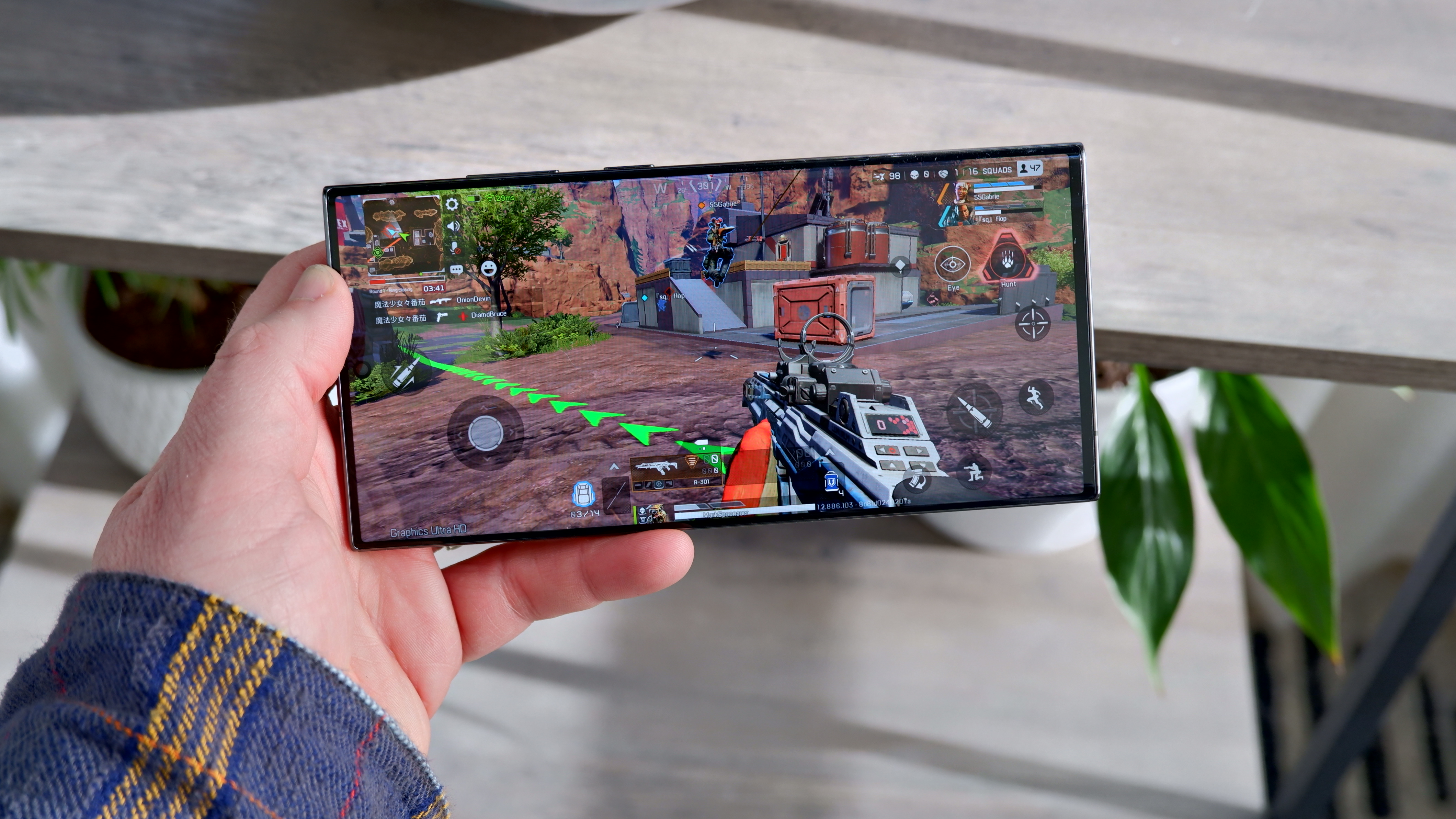
The A16 Bionic chip within the iPhone 14 Pro Max provides amazing performance, but it now has serious competition from the Snapdragon 8 Gen 2 chip for Galaxy inside the S23 Ultra, as you'll see in our Galaxy S23 Ultra benchmarks story.
| Row 0 - Cell 0 | CPU | Single-core | Multicore |
| Samsung Galaxy S23 Ultra | Snapdragon 8 Gen 2 for Galaxy | 1396 | 4882 |
| iPhone 14 Pro Max | A16 Bionic | 1882 | 5333 |
Geekbench measures CPU performance, both in single-core and multicore applications. The Galaxy S23 noticeably gets close to the iPhone 14 Pro Max on multicore performance but the A16 Bionic is still dominant on the single-core test.
| Row 0 - Cell 0 | Unlimited (FPS) | Extreme Unlimited (FPS) |
| Galaxy S23 Ultra | 79.3 | 20.9 |
| iPhone 14 Pro Max | 74 | 20 |
We use 3DMark Wild Life to test the graphic performance of mobile devices. And this is where the S23 Ultra stood out with its frames per second (FPS) count.
The Galaxy S23 Ultra surpassed the iPhone 14 Pro Max 79 fps to 74 fps on the Unlimited test and it narrowly beat the iPhone with a 20.9 to 20 fps score on the more demanding Extreme Unlimited test. The S23 Ultra also proved amazingly fluid in our hands-on gameplay.
| Row 0 - Cell 0 | Time to complete (Mins:Secs) |
| Galaxy S23 Ultra | 0:40 |
| iPhone 14 Pro Max | 0:30 |
In our Adobe Premiere Rush test we transcode a 4K video file to 1080p and time the results. The Galaxy S23 Ultra took 40 seconds, which is quite good. However, the iPhone 14 Max was 10 seconds faster.
Winner: iPhone 14 Pro Max. Apple is still the performance champ, though it has some catching up to do on graphics.
Galaxy S23 Ultra vs iPhone 14 Pro Max: Software and special features
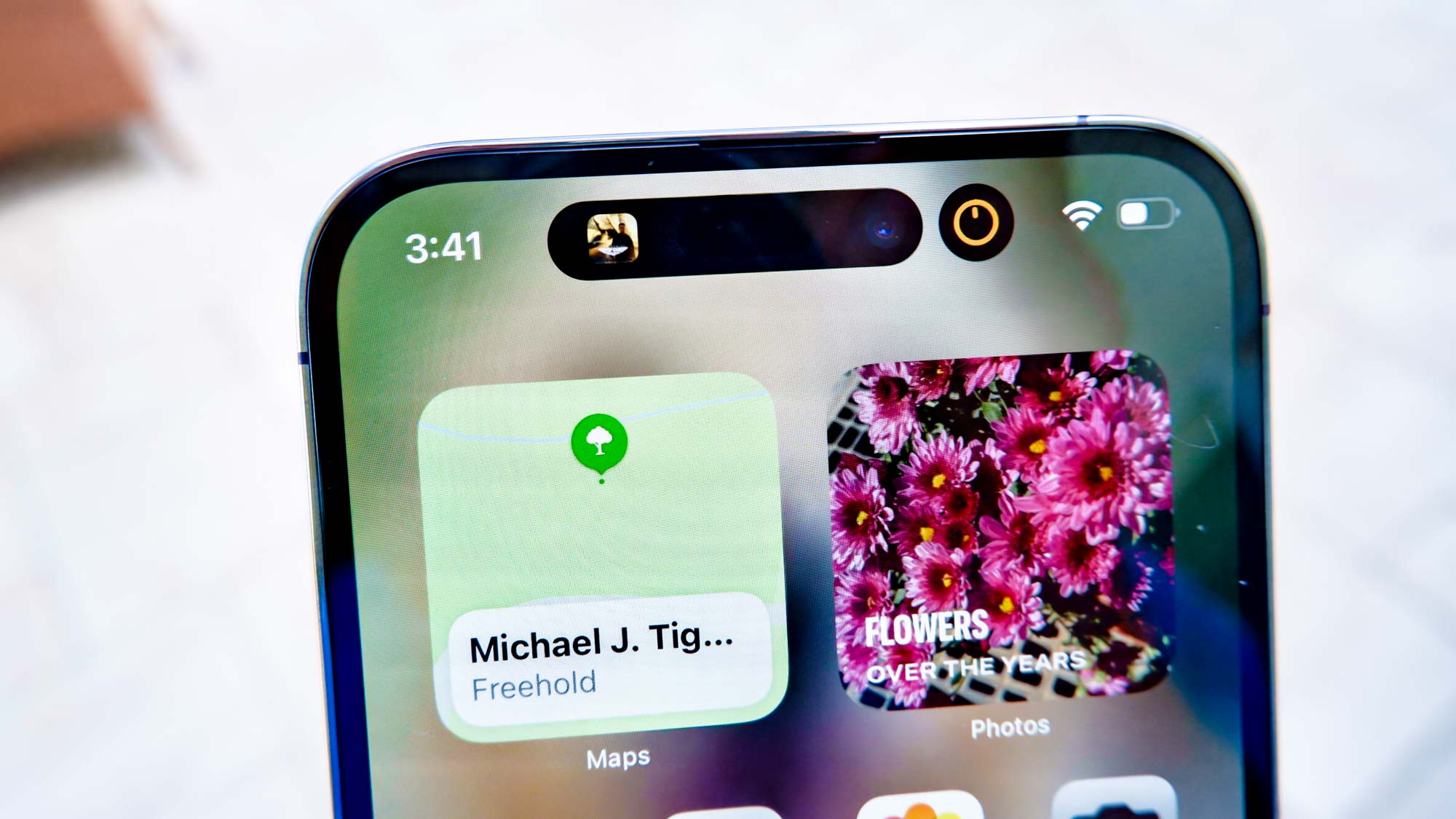
The iPhone 14 Pro Max runs iOS 16, which introduces a number of enhancements. You can customize the lock screen with widgets, photos and more, and what you choose will also show up on your always-on display. Other highlights include the ability to unsend texts and edit them, and (finally) a battery percentage indicator.
There's also iCloud Shared Photo Library, which make it easier to share and edit photos with family members. The best special feature is Dynamic Island, which replaces the notch with an area that shows alerts and Live Activities, including sports scores and the real-time progress of your food order or ride share.
For the Galaxy S23 Ultra, the S Pen remains the most unique special feature, letting you take notes, draw and sketch. The Samsung Notes app now lets you collaborate in real-time with others.
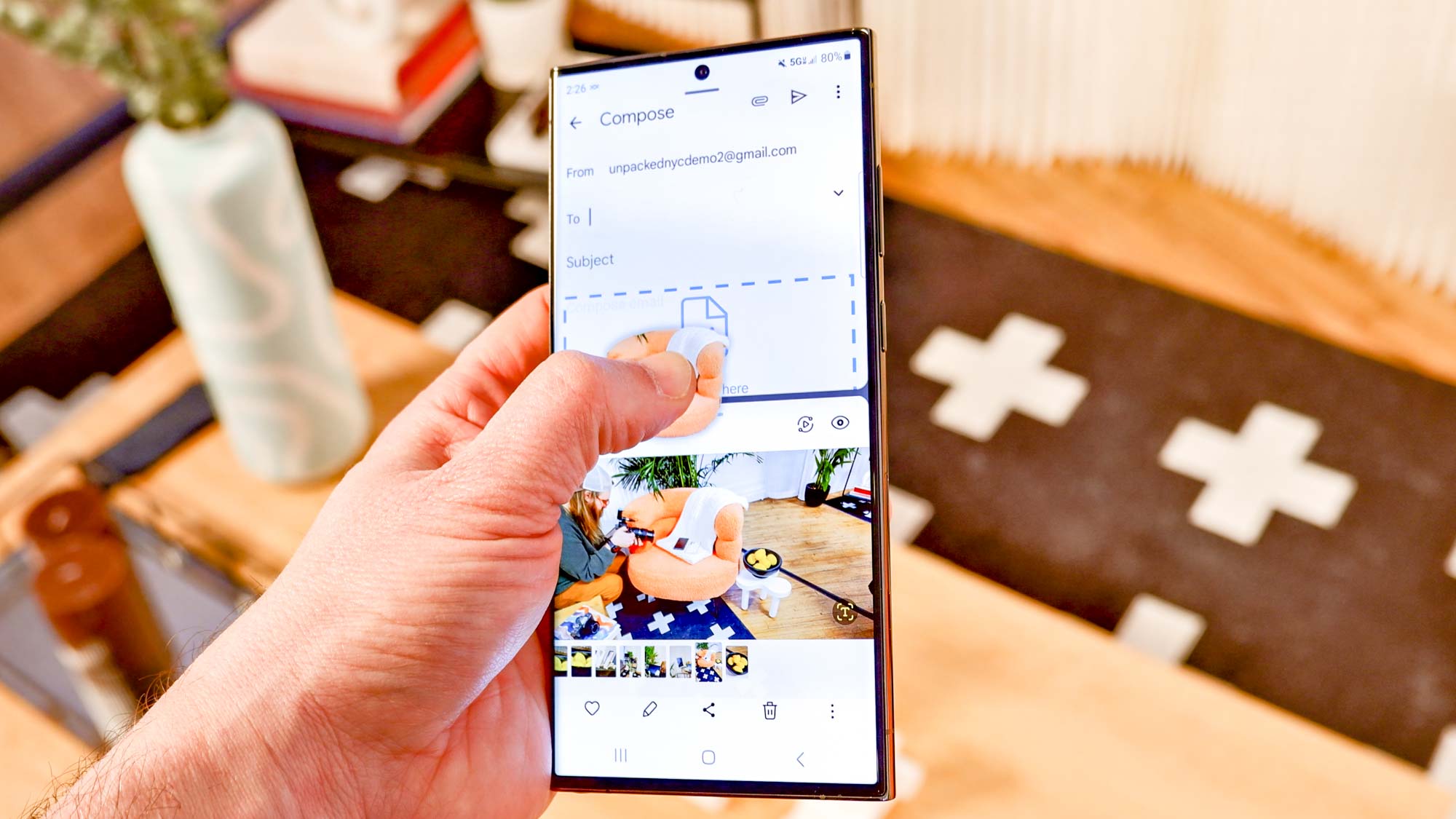
Running on top of Android 13, the new One UI 5.1 software for Galaxy S23 Ultra offers a number of handy improvements. For example, with Bixby Text Call Samsung's assistant can answer incoming calls for you, and then you can pass on messages via speech-to-text or by voice typing.
There's also a new Modes option that lets you create customized settings for different aspects of your life, whether it's sleep, exercise, driving or work. (Yes, it's a lot like iOS 16's Focus mode feature, only now it's on a Samsung device.) There's also more personalization features in One UI 5.1, such as an improved stacked widget system and recommended apps and actions for different times of the day.
Winner: Draw. Both iOS 16 and One UI 5.1 on top of Android 13 are powerful, though some may prefer to have the S Pen.
Galaxy S23 Ultra vs iPhone 14 Pro Max: Battery life and charging
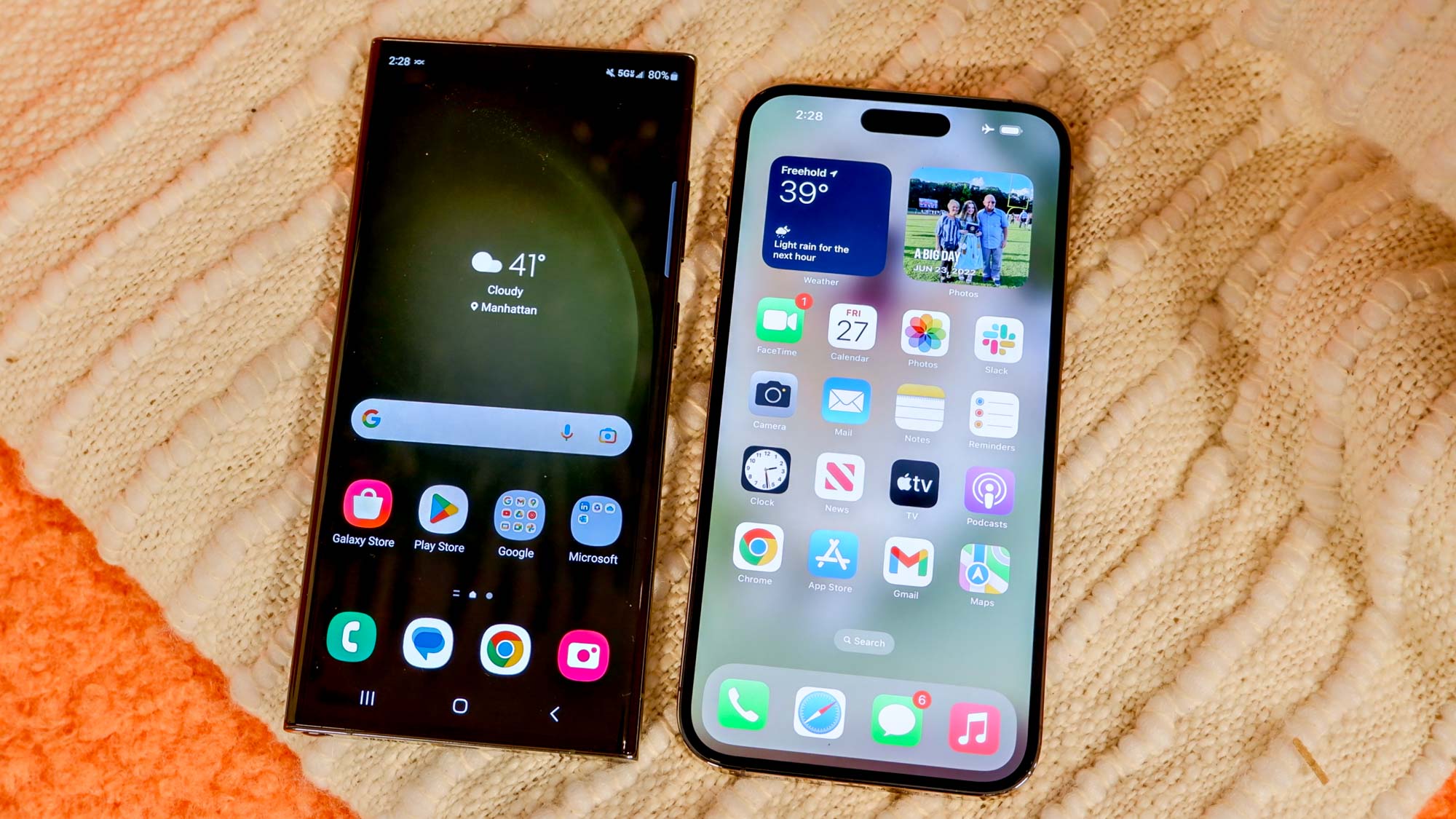
We know that the iPhone 14 Pro Max contains a 4,323 mAh capacity battery, with 20W wired charging and 15W MagSafe wireless charging. Samsung's not changing from the Galaxy S22 Ultra's 5,000 mAh battery, though the new Snapdragon 8 Gen 2 chip and cooling system in the Galaxy S23 Ultra should help that phone run longer.
| Row 0 - Cell 0 | Battery size | Battery life (hrs:mins) |
| Galaxy S23 Ultra | 5,000 mAh | 13:09 (60Hz) / 12:22 (adaptive) |
| iPhone 14 Pro Max | 4,323 mAh | 13:39 |
On the Tom's Guide battery test, which involves continuous 5G web surfing at 150 nits of screen brightness, the iPhone 14 Pro Max endured for 13 hours and 39 minutes. That beats the Galaxy S23 Ultra's best result of 13:09, which came with the screen refresh rate lowered to 60Hz. In adaptive mode when the display could scale up to 120Hz, the S22 Ultra lasted 12:22.
Still, both runtimes are good enough to warrant inclusion in our best phone battery life list.
On our charging test, the S23 Ultra reached 57% in 30 minutes with a 45W charger, which is below Samsung's claim of 65%. The iPhone 14 Pro Max got to only 42% with a 20W charger.
Winner: iPhone 14 Pro Max. Apple's longer battery life without having to change the refresh rate gives it the nod here.
Samsung Galaxy S23 Ultra vs iPhone 14 Pro Max: Winner
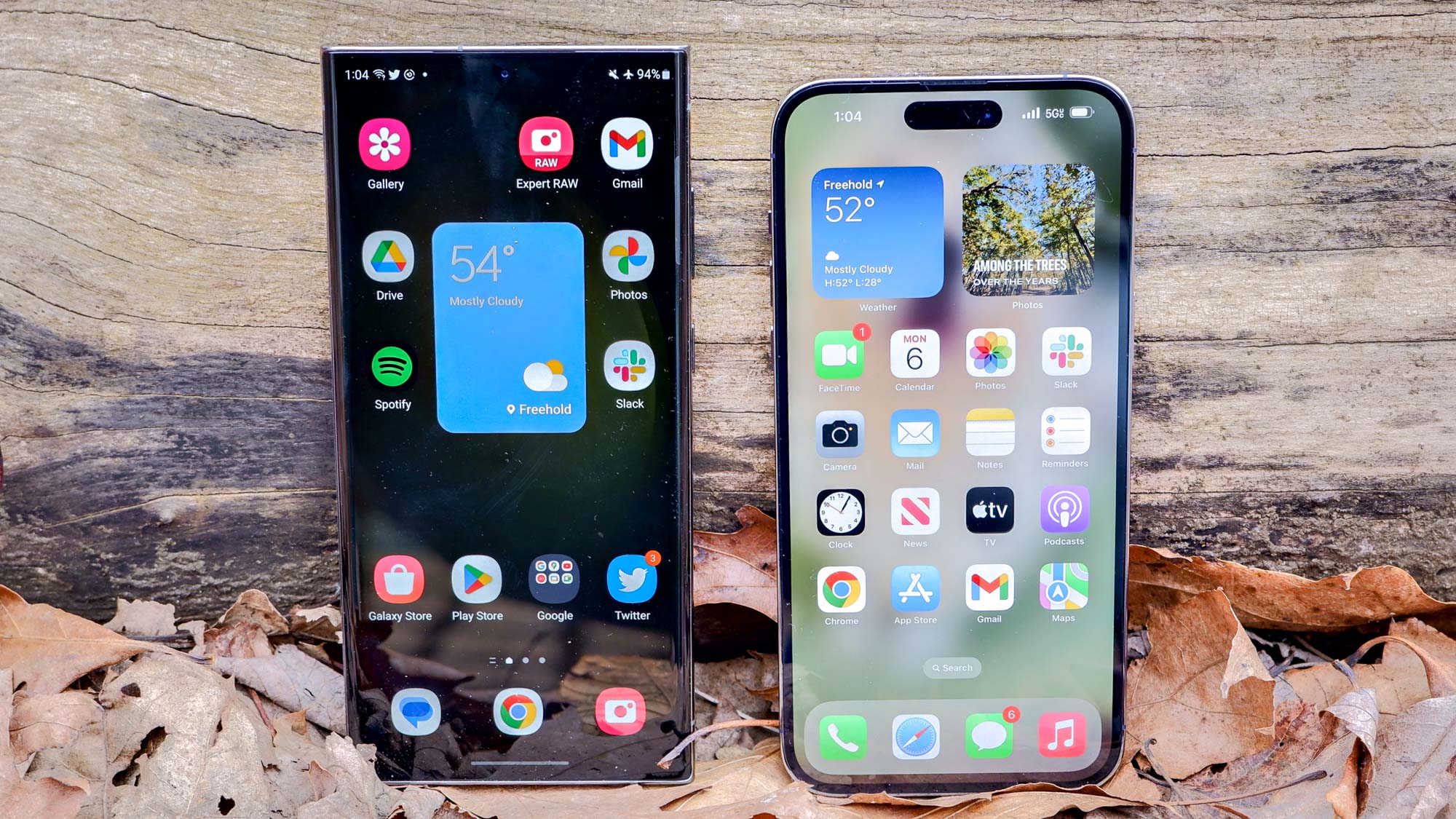
| Row 0 - Cell 0 | Galaxy S23 Ultra | iPhone 14 Pro Max |
| Price and value (10 points) | 6 | 7 |
| Design (10 points) | 10 | 9 |
| Display (15 points) | 15 | 14 |
| Cameras (20 points) | 19 | 18 |
| Video (10 points) | 9 | 9 |
| Performance (10 points) | 9 | 10 |
| Software and special features (10 points) | 9 | 9 |
| Battery life and charging (15 points) | 13 | 14 |
| Overall | 90 | 90 |
If you look at the scorecard for this roundup, the Galaxy S23 Ultra and iPhone 14 Pro Max fight basically ends in a draw. But I think Samsung has done enough — especially on the camera front — to earn the narrowest of wins in this face-off.
Samsung's cameras simply let you do more, from 200MP of resolution to frame your shots to much more powerful zoom and astrophotography features. The iPhone's image quality is better in certain circumstances, however including a number of low-light scenarios we tested.
The Galaxy S23 Ultra also benefits from a richer and slightly bigger display (even if we could do without the curve) and a narrower design.
The iPhone 14 Pro Max wins on price and value, starting at $100 less, and it continues to deliver the best overall performance with its A16 Bionic chip. It also lasts longer on a charge than the S23 Ultra, even though its wired charging is slower.
Of course, a lot of the decision comes down to which OS if you prefer, but if you've been thinking about switching from an iPhone to a Galaxy, the S23 Ultra is as tempting as it gets.
Mark Spoonauer is the global editor in chief of Tom's Guide and has covered technology for over 20 years. In addition to overseeing the direction of Tom's Guide, Mark specializes in covering all things mobile, having reviewed dozens of smartphones and other gadgets. He has spoken at key industry events and appears regularly on TV to discuss the latest trends, including Cheddar, Fox Business and other outlets. Mark was previously editor in chief of Laptop Mag, and his work has appeared in Wired, Popular Science and Inc. Follow him on Twitter at @mspoonauer.
-
sgodsell The Galaxy S23 models also support 1080p video recording at 960 fps, or 4 times faster than Apple's latest iPhone 14 pro models. In other words the S23 models can produce slow motion video that is 4 times slower.Reply
Not to mention all Android smartphones support real multitasking with split screen multitasking, which is something that Apples iPhones still to this day don't support. There is just more stuff that the S23 models can do over Apple's iPhone 14 pro models.

